CNA347 Project: Education Tool for Childhood Asthma Management
VerifiedAdded on 2022/08/20
|17
|2662
|10
Project
AI Summary
This project focuses on developing an educational tool for managing childhood asthma. The assignment begins by defining asthma and its impact, particularly in children, highlighting symptoms such as difficulty breathing, shortness of breath, and wheezing. It emphasizes the importance of parental care, including early treatment and collaboration with healthcare professionals, and addresses barriers to effective care such as poor compliance and lack of awareness. The project then delves into the consequences of childhood asthma, including school absenteeism and the need for a holistic, biopsychosocial approach. It outlines pharmacological management strategies, including bronchodilators and the proper use of devices like inhalers, and stresses the importance of environmental control, identifying triggers, and collaborating with schools. Finally, the project emphasizes the role of parental education through seminars, workshops, and exercises, to improve breathing patterns, reduce stress, and assess the child's social, physical, mental, and educational needs. The assignment also includes a comprehensive list of references supporting the presented information.
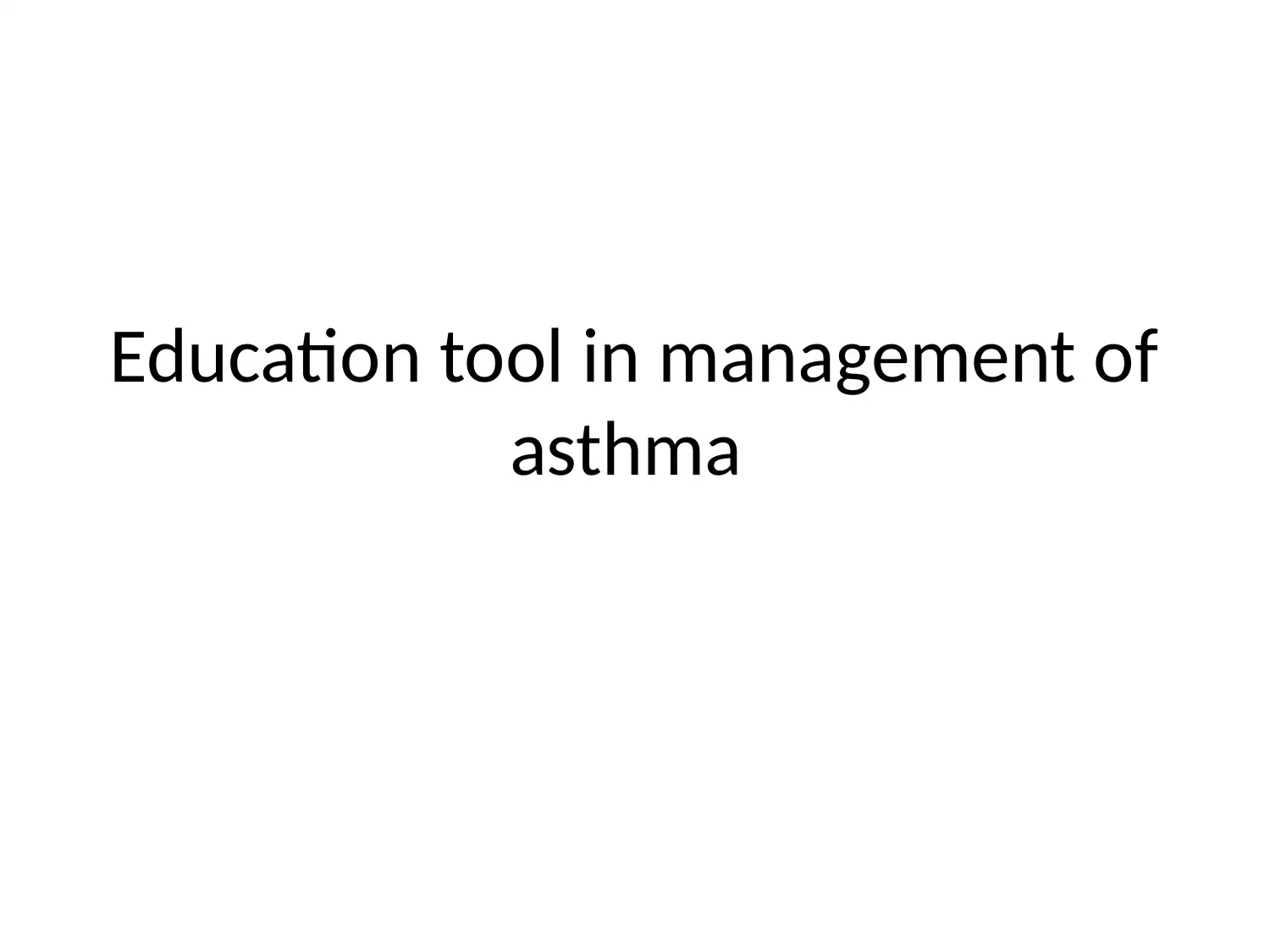
Education tool in management of
asthma
asthma
Paraphrase This Document
Need a fresh take? Get an instant paraphrase of this document with our AI Paraphraser
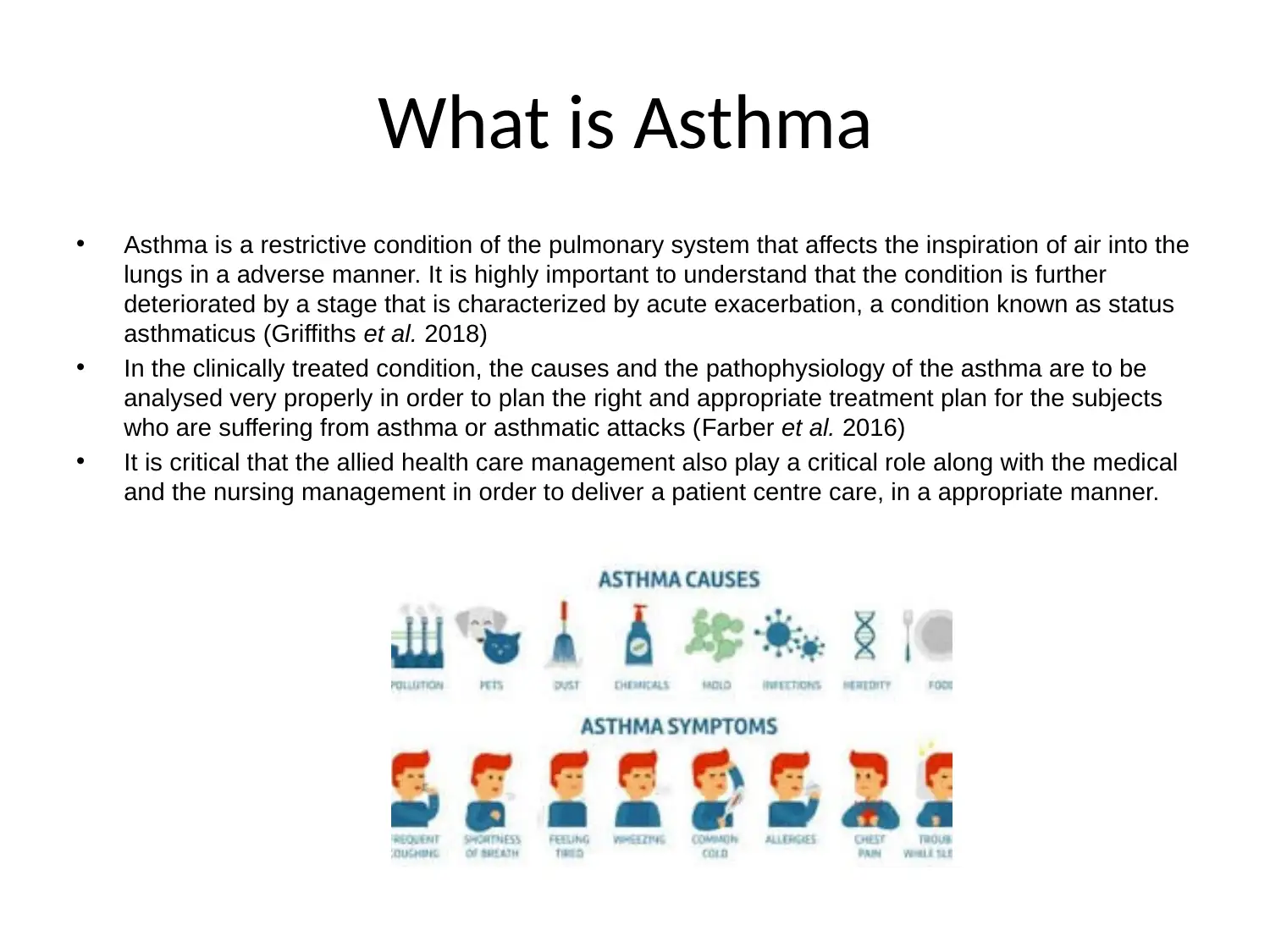
What is Asthma
• Asthma is a restrictive condition of the pulmonary system that affects the inspiration of air into the
lungs in a adverse manner. It is highly important to understand that the condition is further
deteriorated by a stage that is characterized by acute exacerbation, a condition known as status
asthmaticus (Griffiths et al. 2018)
• In the clinically treated condition, the causes and the pathophysiology of the asthma are to be
analysed very properly in order to plan the right and appropriate treatment plan for the subjects
who are suffering from asthma or asthmatic attacks (Farber et al. 2016)
• It is critical that the allied health care management also play a critical role along with the medical
and the nursing management in order to deliver a patient centre care, in a appropriate manner.
• Asthma is a restrictive condition of the pulmonary system that affects the inspiration of air into the
lungs in a adverse manner. It is highly important to understand that the condition is further
deteriorated by a stage that is characterized by acute exacerbation, a condition known as status
asthmaticus (Griffiths et al. 2018)
• In the clinically treated condition, the causes and the pathophysiology of the asthma are to be
analysed very properly in order to plan the right and appropriate treatment plan for the subjects
who are suffering from asthma or asthmatic attacks (Farber et al. 2016)
• It is critical that the allied health care management also play a critical role along with the medical
and the nursing management in order to deliver a patient centre care, in a appropriate manner.
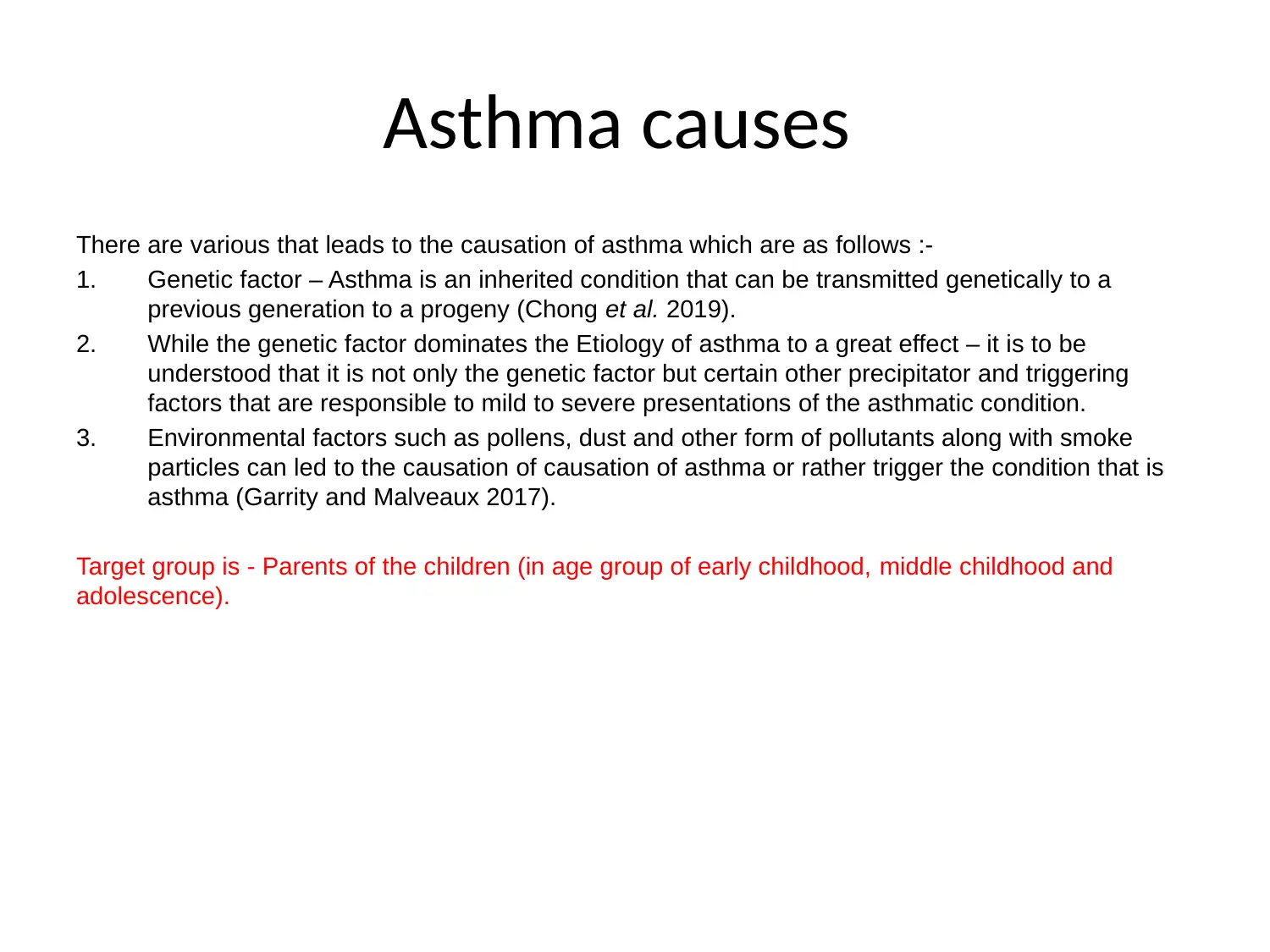
Asthma causes
There are various that leads to the causation of asthma which are as follows :-
1. Genetic factor – Asthma is an inherited condition that can be transmitted genetically to a
previous generation to a progeny (Chong et al. 2019).
2. While the genetic factor dominates the Etiology of asthma to a great effect – it is to be
understood that it is not only the genetic factor but certain other precipitator and triggering
factors that are responsible to mild to severe presentations of the asthmatic condition.
3. Environmental factors such as pollens, dust and other form of pollutants along with smoke
particles can led to the causation of causation of asthma or rather trigger the condition that is
asthma (Garrity and Malveaux 2017).
Target group is - Parents of the children (in age group of early childhood, middle childhood and
adolescence).
There are various that leads to the causation of asthma which are as follows :-
1. Genetic factor – Asthma is an inherited condition that can be transmitted genetically to a
previous generation to a progeny (Chong et al. 2019).
2. While the genetic factor dominates the Etiology of asthma to a great effect – it is to be
understood that it is not only the genetic factor but certain other precipitator and triggering
factors that are responsible to mild to severe presentations of the asthmatic condition.
3. Environmental factors such as pollens, dust and other form of pollutants along with smoke
particles can led to the causation of causation of asthma or rather trigger the condition that is
asthma (Garrity and Malveaux 2017).
Target group is - Parents of the children (in age group of early childhood, middle childhood and
adolescence).
⊘ This is a preview!⊘
Do you want full access?
Subscribe today to unlock all pages.

Trusted by 1+ million students worldwide
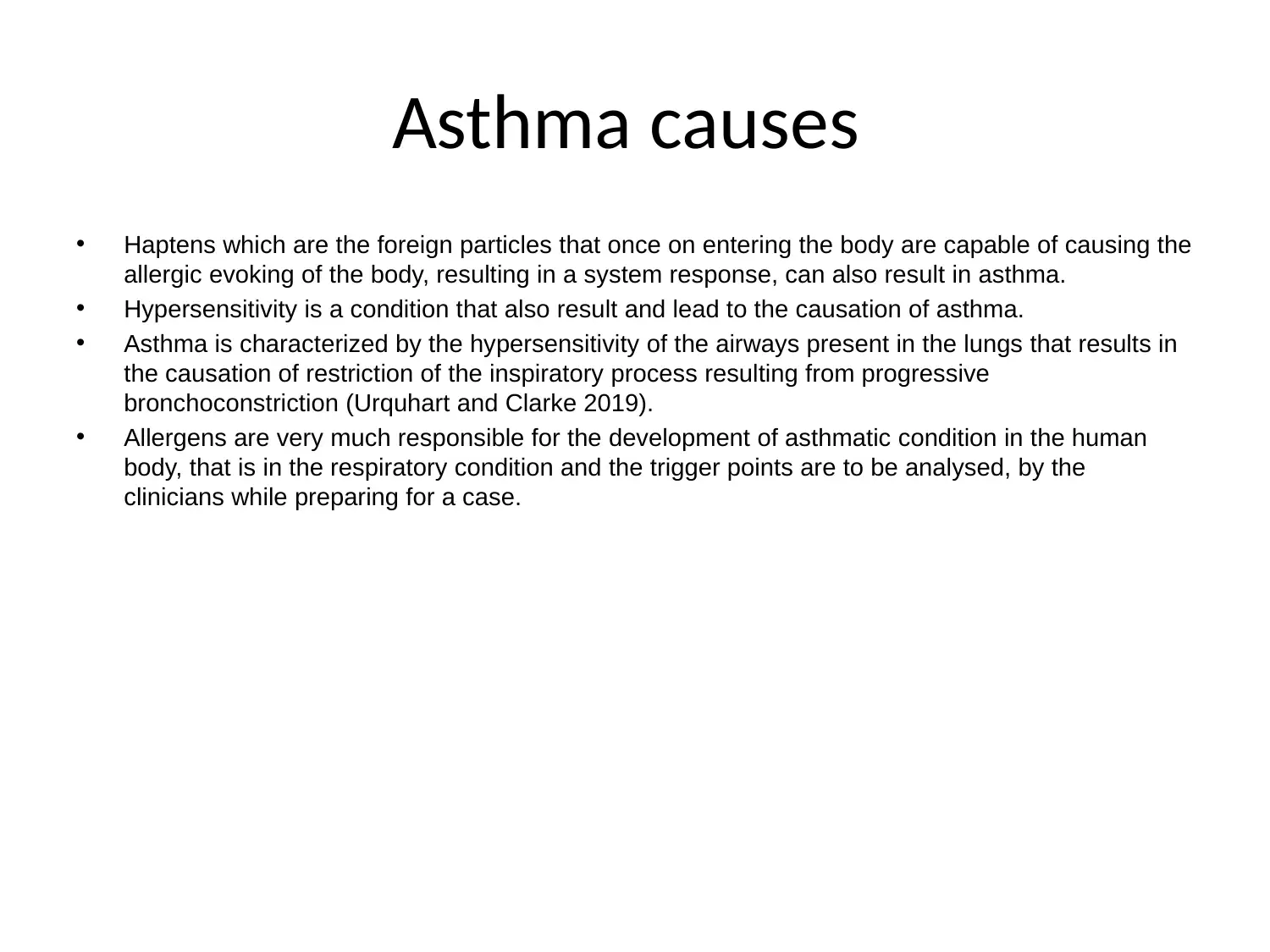
Asthma causes
• Haptens which are the foreign particles that once on entering the body are capable of causing the
allergic evoking of the body, resulting in a system response, can also result in asthma.
• Hypersensitivity is a condition that also result and lead to the causation of asthma.
• Asthma is characterized by the hypersensitivity of the airways present in the lungs that results in
the causation of restriction of the inspiratory process resulting from progressive
bronchoconstriction (Urquhart and Clarke 2019).
• Allergens are very much responsible for the development of asthmatic condition in the human
body, that is in the respiratory condition and the trigger points are to be analysed, by the
clinicians while preparing for a case.
• Haptens which are the foreign particles that once on entering the body are capable of causing the
allergic evoking of the body, resulting in a system response, can also result in asthma.
• Hypersensitivity is a condition that also result and lead to the causation of asthma.
• Asthma is characterized by the hypersensitivity of the airways present in the lungs that results in
the causation of restriction of the inspiratory process resulting from progressive
bronchoconstriction (Urquhart and Clarke 2019).
• Allergens are very much responsible for the development of asthmatic condition in the human
body, that is in the respiratory condition and the trigger points are to be analysed, by the
clinicians while preparing for a case.
Paraphrase This Document
Need a fresh take? Get an instant paraphrase of this document with our AI Paraphraser
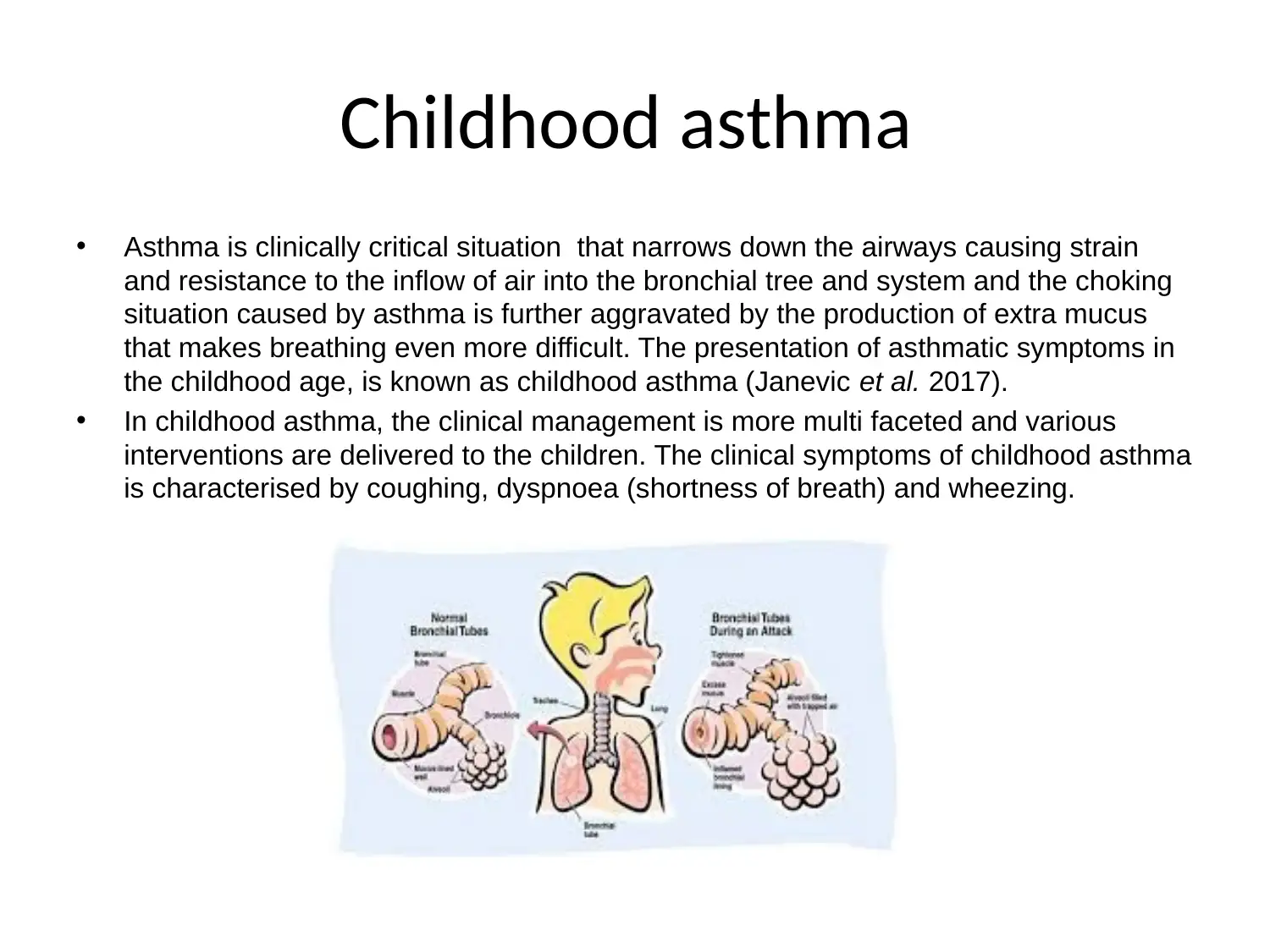
Childhood asthma
• Asthma is clinically critical situation that narrows down the airways causing strain
and resistance to the inflow of air into the bronchial tree and system and the choking
situation caused by asthma is further aggravated by the production of extra mucus
that makes breathing even more difficult. The presentation of asthmatic symptoms in
the childhood age, is known as childhood asthma (Janevic et al. 2017).
• In childhood asthma, the clinical management is more multi faceted and various
interventions are delivered to the children. The clinical symptoms of childhood asthma
is characterised by coughing, dyspnoea (shortness of breath) and wheezing.
• Asthma is clinically critical situation that narrows down the airways causing strain
and resistance to the inflow of air into the bronchial tree and system and the choking
situation caused by asthma is further aggravated by the production of extra mucus
that makes breathing even more difficult. The presentation of asthmatic symptoms in
the childhood age, is known as childhood asthma (Janevic et al. 2017).
• In childhood asthma, the clinical management is more multi faceted and various
interventions are delivered to the children. The clinical symptoms of childhood asthma
is characterised by coughing, dyspnoea (shortness of breath) and wheezing.
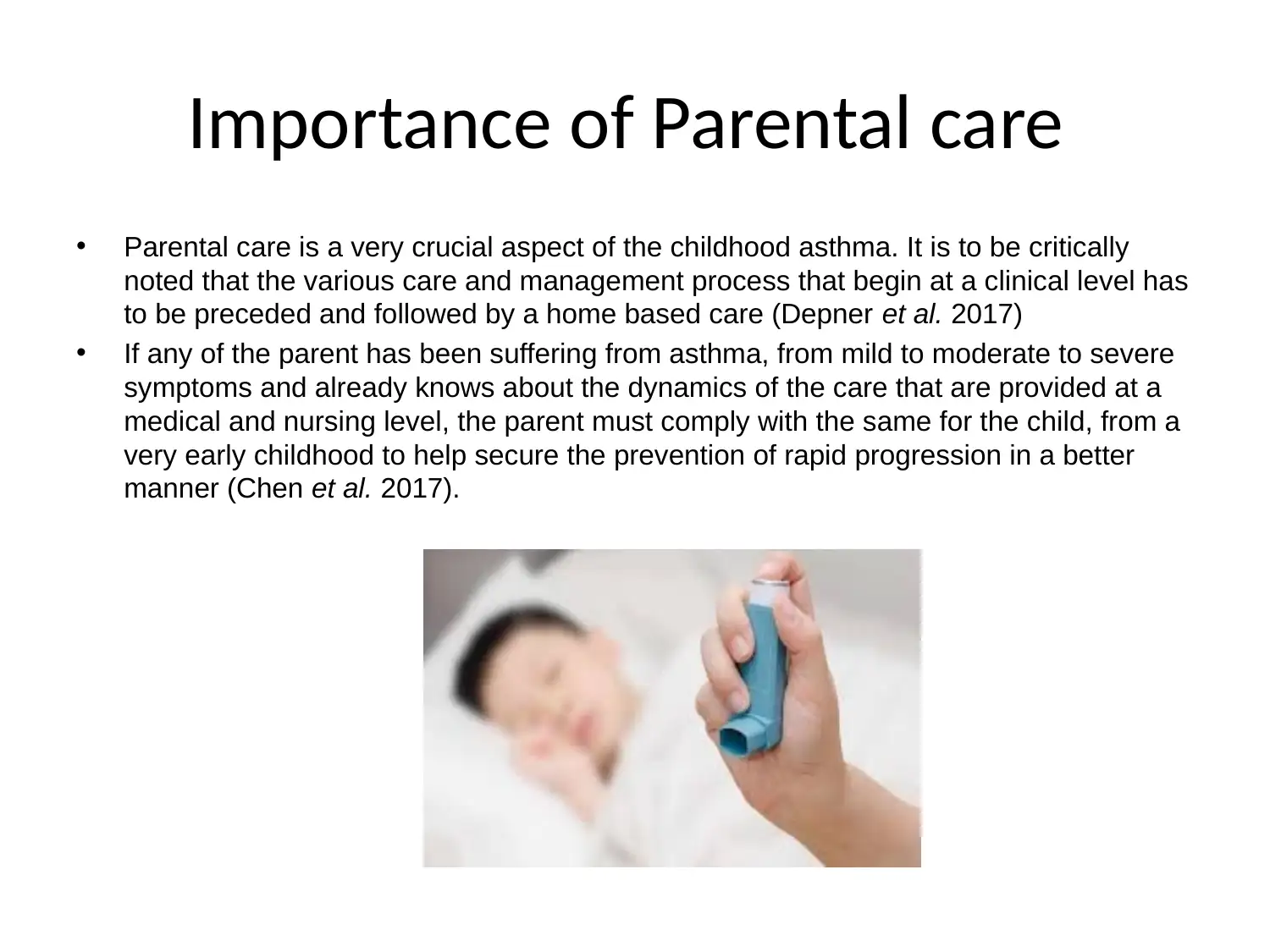
Importance of Parental care
• Parental care is a very crucial aspect of the childhood asthma. It is to be critically
noted that the various care and management process that begin at a clinical level has
to be preceded and followed by a home based care (Depner et al. 2017)
• If any of the parent has been suffering from asthma, from mild to moderate to severe
symptoms and already knows about the dynamics of the care that are provided at a
medical and nursing level, the parent must comply with the same for the child, from a
very early childhood to help secure the prevention of rapid progression in a better
manner (Chen et al. 2017).
• Parental care is a very crucial aspect of the childhood asthma. It is to be critically
noted that the various care and management process that begin at a clinical level has
to be preceded and followed by a home based care (Depner et al. 2017)
• If any of the parent has been suffering from asthma, from mild to moderate to severe
symptoms and already knows about the dynamics of the care that are provided at a
medical and nursing level, the parent must comply with the same for the child, from a
very early childhood to help secure the prevention of rapid progression in a better
manner (Chen et al. 2017).
⊘ This is a preview!⊘
Do you want full access?
Subscribe today to unlock all pages.

Trusted by 1+ million students worldwide
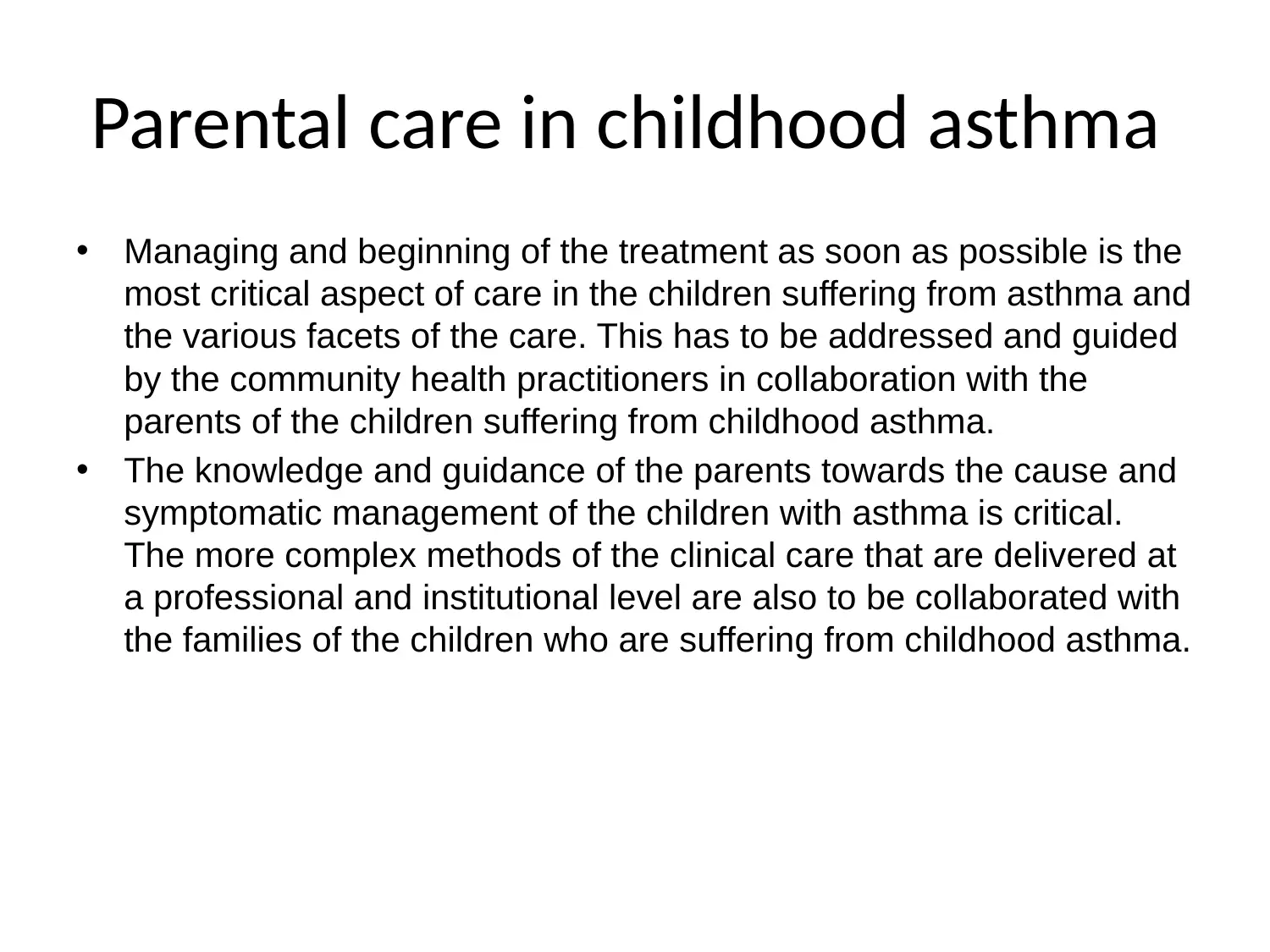
Parental care in childhood asthma
• Managing and beginning of the treatment as soon as possible is the
most critical aspect of care in the children suffering from asthma and
the various facets of the care. This has to be addressed and guided
by the community health practitioners in collaboration with the
parents of the children suffering from childhood asthma.
• The knowledge and guidance of the parents towards the cause and
symptomatic management of the children with asthma is critical.
The more complex methods of the clinical care that are delivered at
a professional and institutional level are also to be collaborated with
the families of the children who are suffering from childhood asthma.
• Managing and beginning of the treatment as soon as possible is the
most critical aspect of care in the children suffering from asthma and
the various facets of the care. This has to be addressed and guided
by the community health practitioners in collaboration with the
parents of the children suffering from childhood asthma.
• The knowledge and guidance of the parents towards the cause and
symptomatic management of the children with asthma is critical.
The more complex methods of the clinical care that are delivered at
a professional and institutional level are also to be collaborated with
the families of the children who are suffering from childhood asthma.
Paraphrase This Document
Need a fresh take? Get an instant paraphrase of this document with our AI Paraphraser
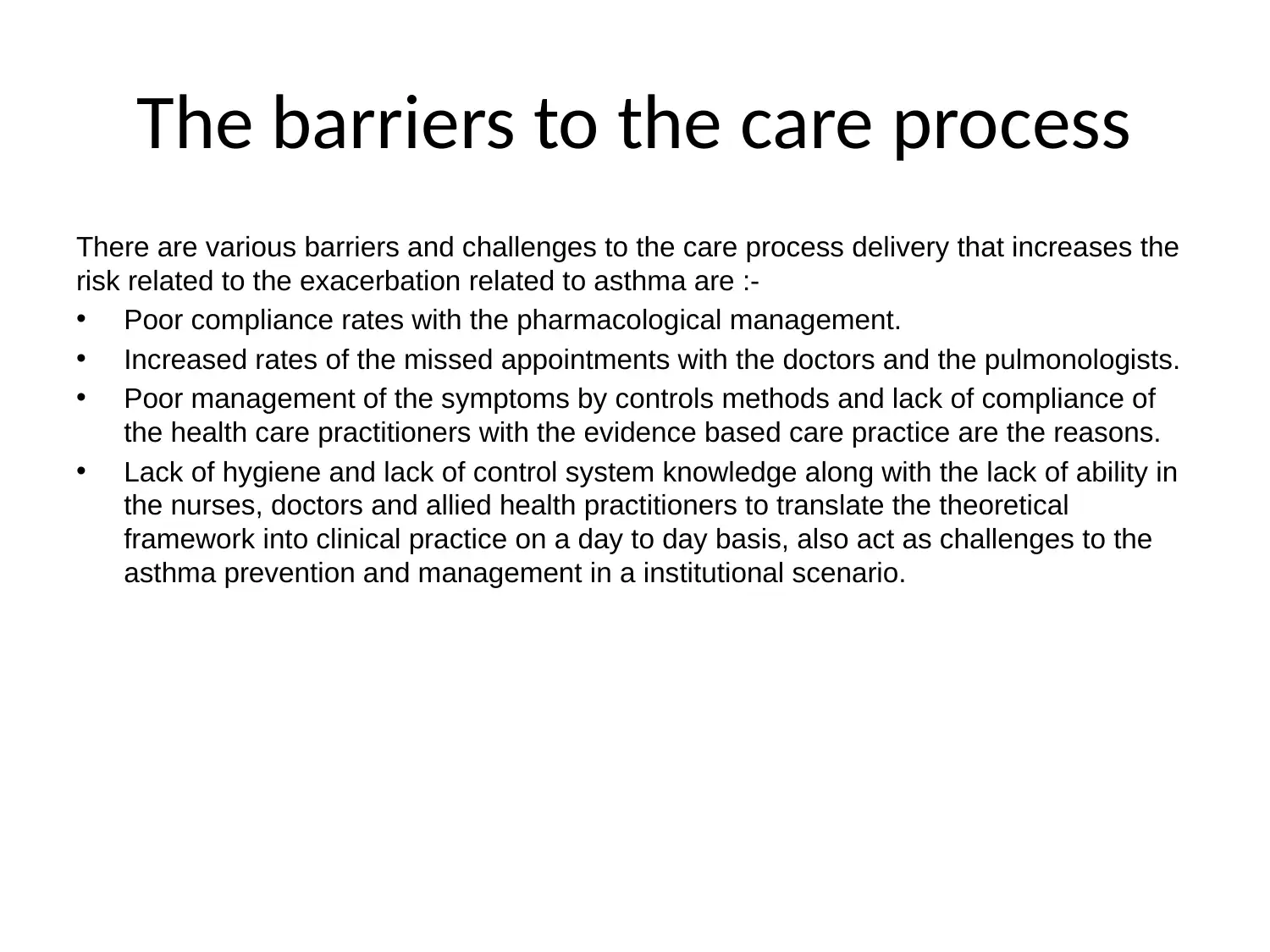
The barriers to the care process
There are various barriers and challenges to the care process delivery that increases the
risk related to the exacerbation related to asthma are :-
• Poor compliance rates with the pharmacological management.
• Increased rates of the missed appointments with the doctors and the pulmonologists.
• Poor management of the symptoms by controls methods and lack of compliance of
the health care practitioners with the evidence based care practice are the reasons.
• Lack of hygiene and lack of control system knowledge along with the lack of ability in
the nurses, doctors and allied health practitioners to translate the theoretical
framework into clinical practice on a day to day basis, also act as challenges to the
asthma prevention and management in a institutional scenario.
There are various barriers and challenges to the care process delivery that increases the
risk related to the exacerbation related to asthma are :-
• Poor compliance rates with the pharmacological management.
• Increased rates of the missed appointments with the doctors and the pulmonologists.
• Poor management of the symptoms by controls methods and lack of compliance of
the health care practitioners with the evidence based care practice are the reasons.
• Lack of hygiene and lack of control system knowledge along with the lack of ability in
the nurses, doctors and allied health practitioners to translate the theoretical
framework into clinical practice on a day to day basis, also act as challenges to the
asthma prevention and management in a institutional scenario.
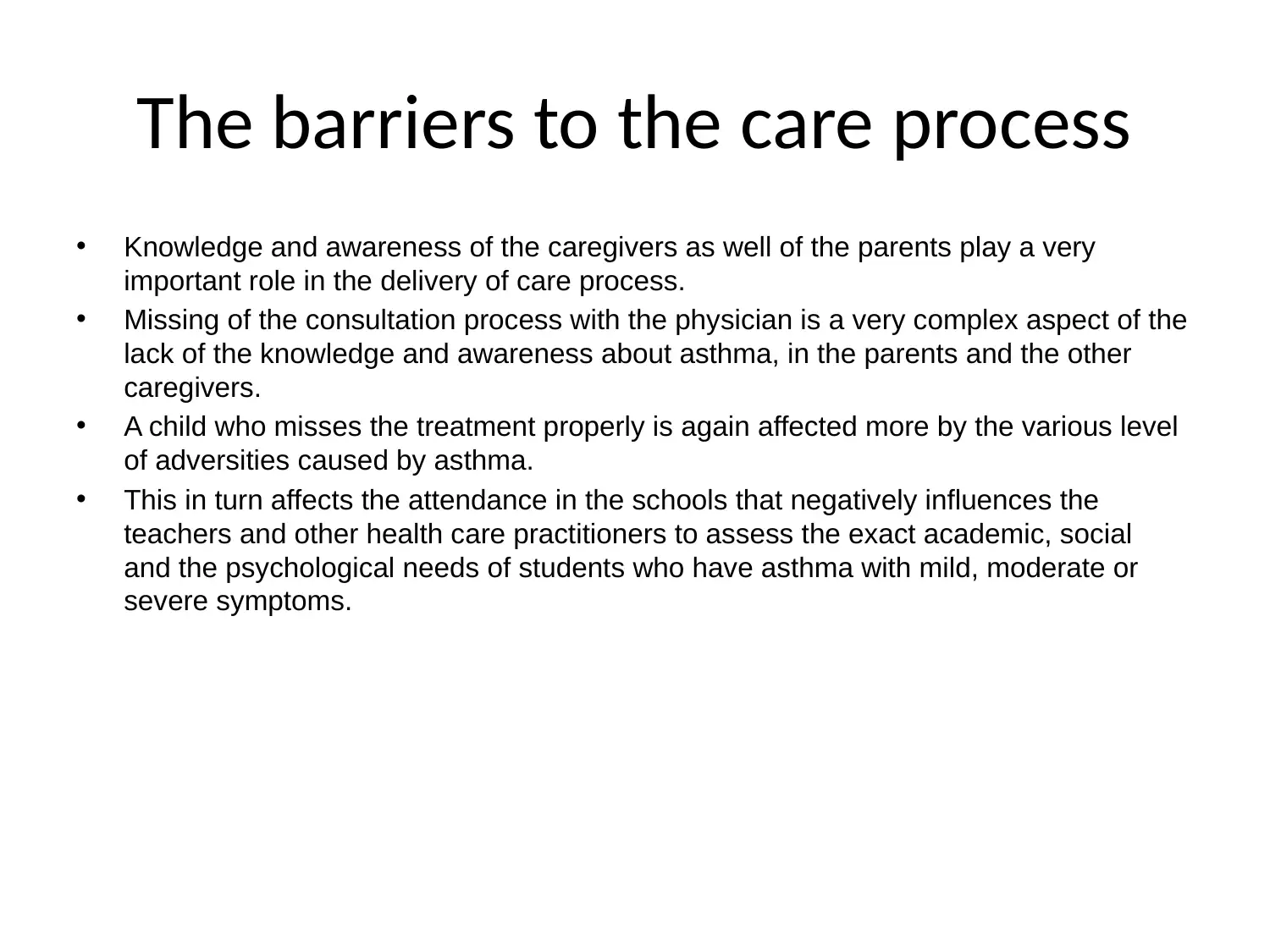
The barriers to the care process
• Knowledge and awareness of the caregivers as well of the parents play a very
important role in the delivery of care process.
• Missing of the consultation process with the physician is a very complex aspect of the
lack of the knowledge and awareness about asthma, in the parents and the other
caregivers.
• A child who misses the treatment properly is again affected more by the various level
of adversities caused by asthma.
• This in turn affects the attendance in the schools that negatively influences the
teachers and other health care practitioners to assess the exact academic, social
and the psychological needs of students who have asthma with mild, moderate or
severe symptoms.
• Knowledge and awareness of the caregivers as well of the parents play a very
important role in the delivery of care process.
• Missing of the consultation process with the physician is a very complex aspect of the
lack of the knowledge and awareness about asthma, in the parents and the other
caregivers.
• A child who misses the treatment properly is again affected more by the various level
of adversities caused by asthma.
• This in turn affects the attendance in the schools that negatively influences the
teachers and other health care practitioners to assess the exact academic, social
and the psychological needs of students who have asthma with mild, moderate or
severe symptoms.
⊘ This is a preview!⊘
Do you want full access?
Subscribe today to unlock all pages.

Trusted by 1+ million students worldwide
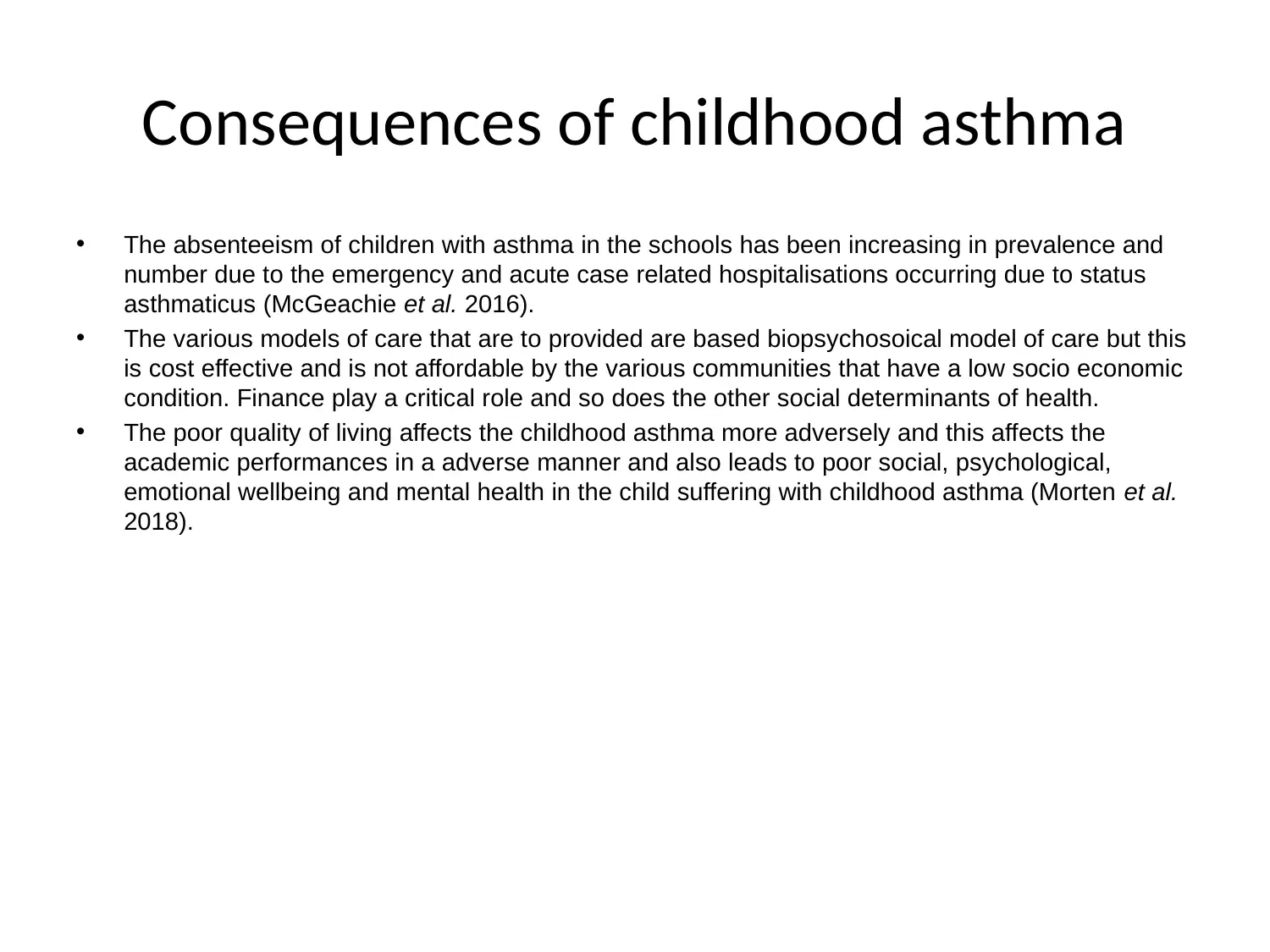
Consequences of childhood asthma
• The absenteeism of children with asthma in the schools has been increasing in prevalence and
number due to the emergency and acute case related hospitalisations occurring due to status
asthmaticus (McGeachie et al. 2016).
• The various models of care that are to provided are based biopsychosoical model of care but this
is cost effective and is not affordable by the various communities that have a low socio economic
condition. Finance play a critical role and so does the other social determinants of health.
• The poor quality of living affects the childhood asthma more adversely and this affects the
academic performances in a adverse manner and also leads to poor social, psychological,
emotional wellbeing and mental health in the child suffering with childhood asthma (Morten et al.
2018).
• The absenteeism of children with asthma in the schools has been increasing in prevalence and
number due to the emergency and acute case related hospitalisations occurring due to status
asthmaticus (McGeachie et al. 2016).
• The various models of care that are to provided are based biopsychosoical model of care but this
is cost effective and is not affordable by the various communities that have a low socio economic
condition. Finance play a critical role and so does the other social determinants of health.
• The poor quality of living affects the childhood asthma more adversely and this affects the
academic performances in a adverse manner and also leads to poor social, psychological,
emotional wellbeing and mental health in the child suffering with childhood asthma (Morten et al.
2018).
Paraphrase This Document
Need a fresh take? Get an instant paraphrase of this document with our AI Paraphraser
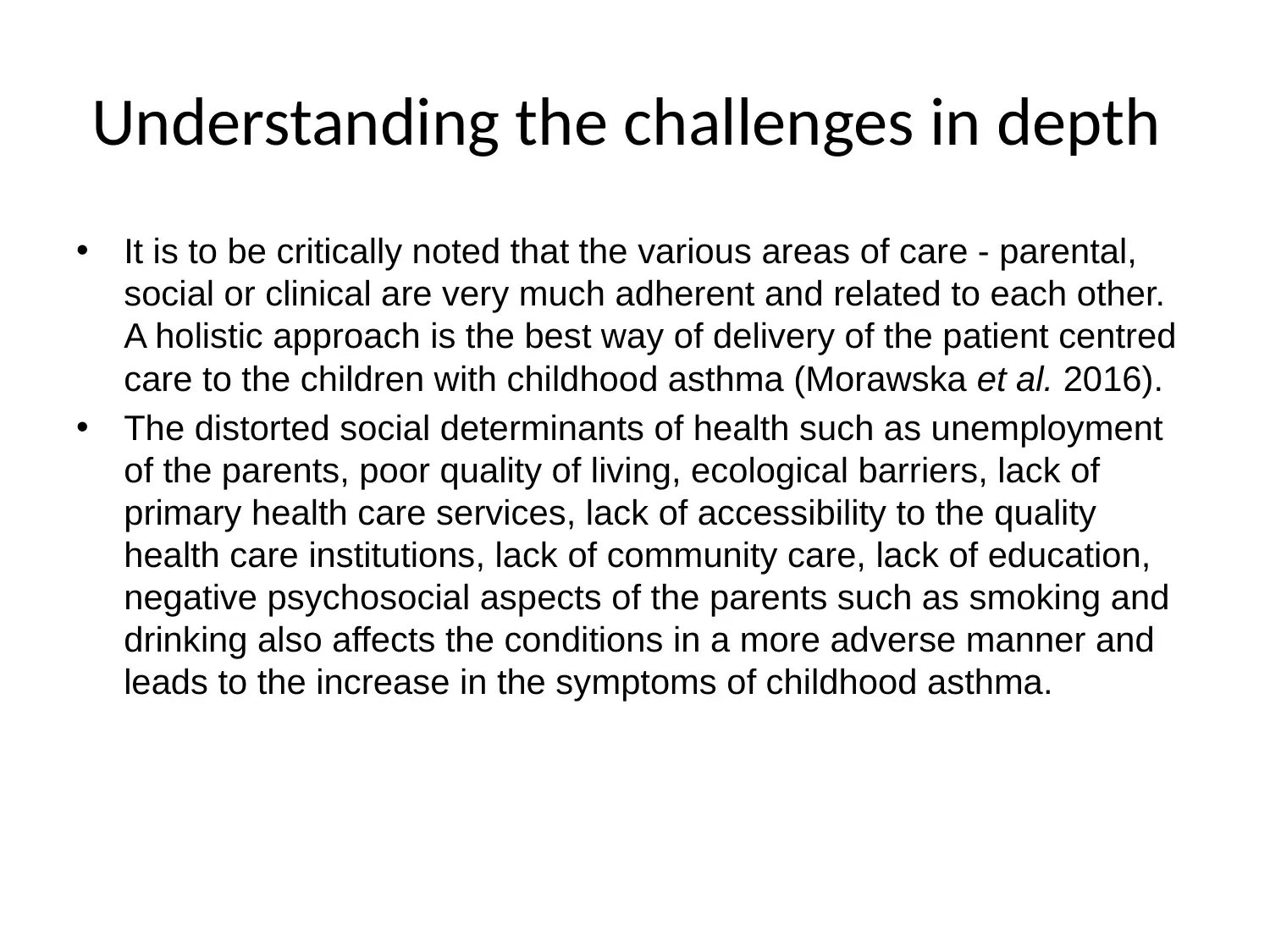
Understanding the challenges in depth
• It is to be critically noted that the various areas of care - parental,
social or clinical are very much adherent and related to each other.
A holistic approach is the best way of delivery of the patient centred
care to the children with childhood asthma (Morawska et al. 2016).
• The distorted social determinants of health such as unemployment
of the parents, poor quality of living, ecological barriers, lack of
primary health care services, lack of accessibility to the quality
health care institutions, lack of community care, lack of education,
negative psychosocial aspects of the parents such as smoking and
drinking also affects the conditions in a more adverse manner and
leads to the increase in the symptoms of childhood asthma.
• It is to be critically noted that the various areas of care - parental,
social or clinical are very much adherent and related to each other.
A holistic approach is the best way of delivery of the patient centred
care to the children with childhood asthma (Morawska et al. 2016).
• The distorted social determinants of health such as unemployment
of the parents, poor quality of living, ecological barriers, lack of
primary health care services, lack of accessibility to the quality
health care institutions, lack of community care, lack of education,
negative psychosocial aspects of the parents such as smoking and
drinking also affects the conditions in a more adverse manner and
leads to the increase in the symptoms of childhood asthma.
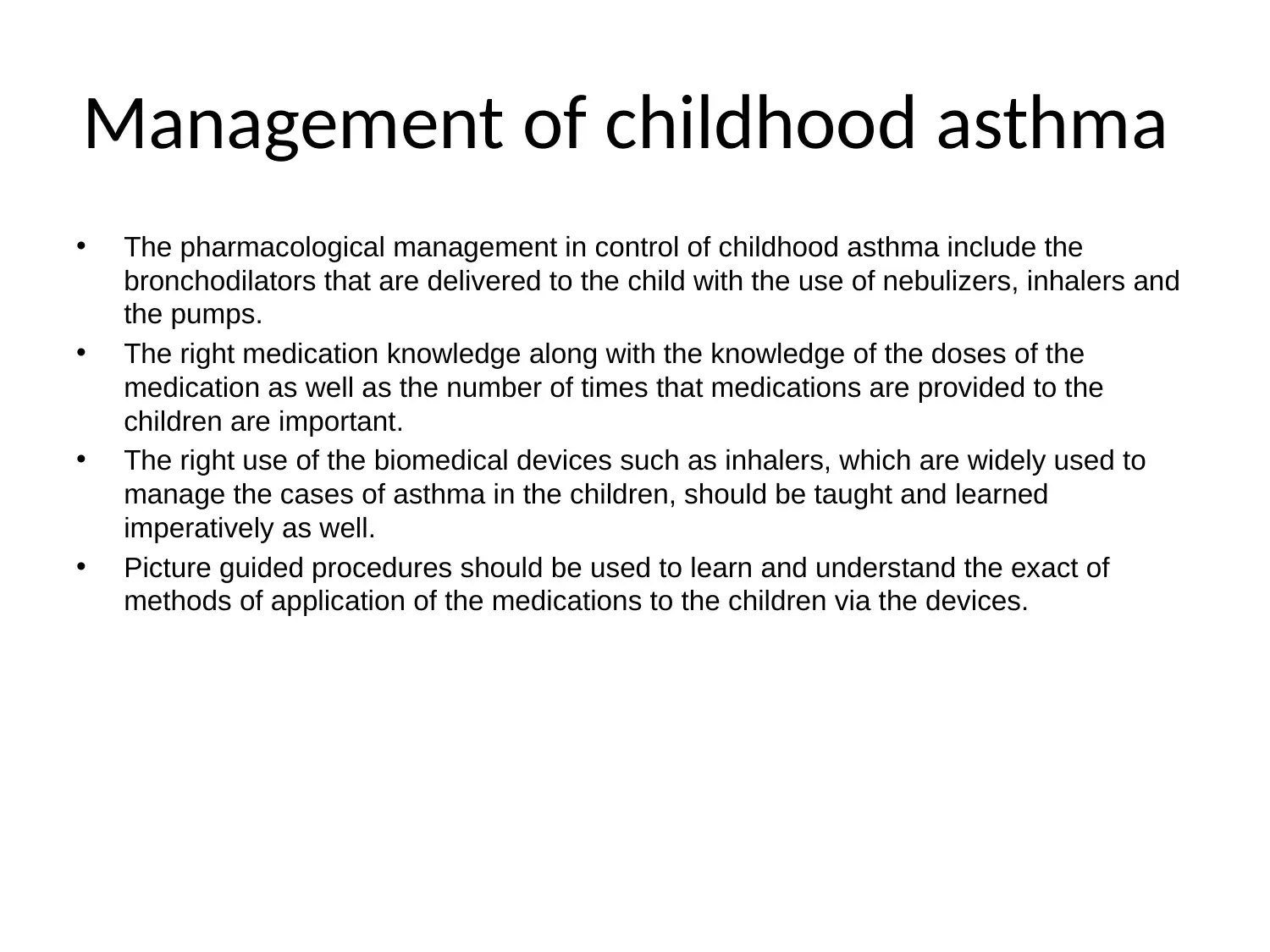
Management of childhood asthma
• The pharmacological management in control of childhood asthma include the
bronchodilators that are delivered to the child with the use of nebulizers, inhalers and
the pumps.
• The right medication knowledge along with the knowledge of the doses of the
medication as well as the number of times that medications are provided to the
children are important.
• The right use of the biomedical devices such as inhalers, which are widely used to
manage the cases of asthma in the children, should be taught and learned
imperatively as well.
• Picture guided procedures should be used to learn and understand the exact of
methods of application of the medications to the children via the devices.
• The pharmacological management in control of childhood asthma include the
bronchodilators that are delivered to the child with the use of nebulizers, inhalers and
the pumps.
• The right medication knowledge along with the knowledge of the doses of the
medication as well as the number of times that medications are provided to the
children are important.
• The right use of the biomedical devices such as inhalers, which are widely used to
manage the cases of asthma in the children, should be taught and learned
imperatively as well.
• Picture guided procedures should be used to learn and understand the exact of
methods of application of the medications to the children via the devices.
⊘ This is a preview!⊘
Do you want full access?
Subscribe today to unlock all pages.

Trusted by 1+ million students worldwide
1 out of 17
Related Documents
Your All-in-One AI-Powered Toolkit for Academic Success.
+13062052269
info@desklib.com
Available 24*7 on WhatsApp / Email
![[object Object]](/_next/static/media/star-bottom.7253800d.svg)
Unlock your academic potential
Copyright © 2020–2025 A2Z Services. All Rights Reserved. Developed and managed by ZUCOL.




